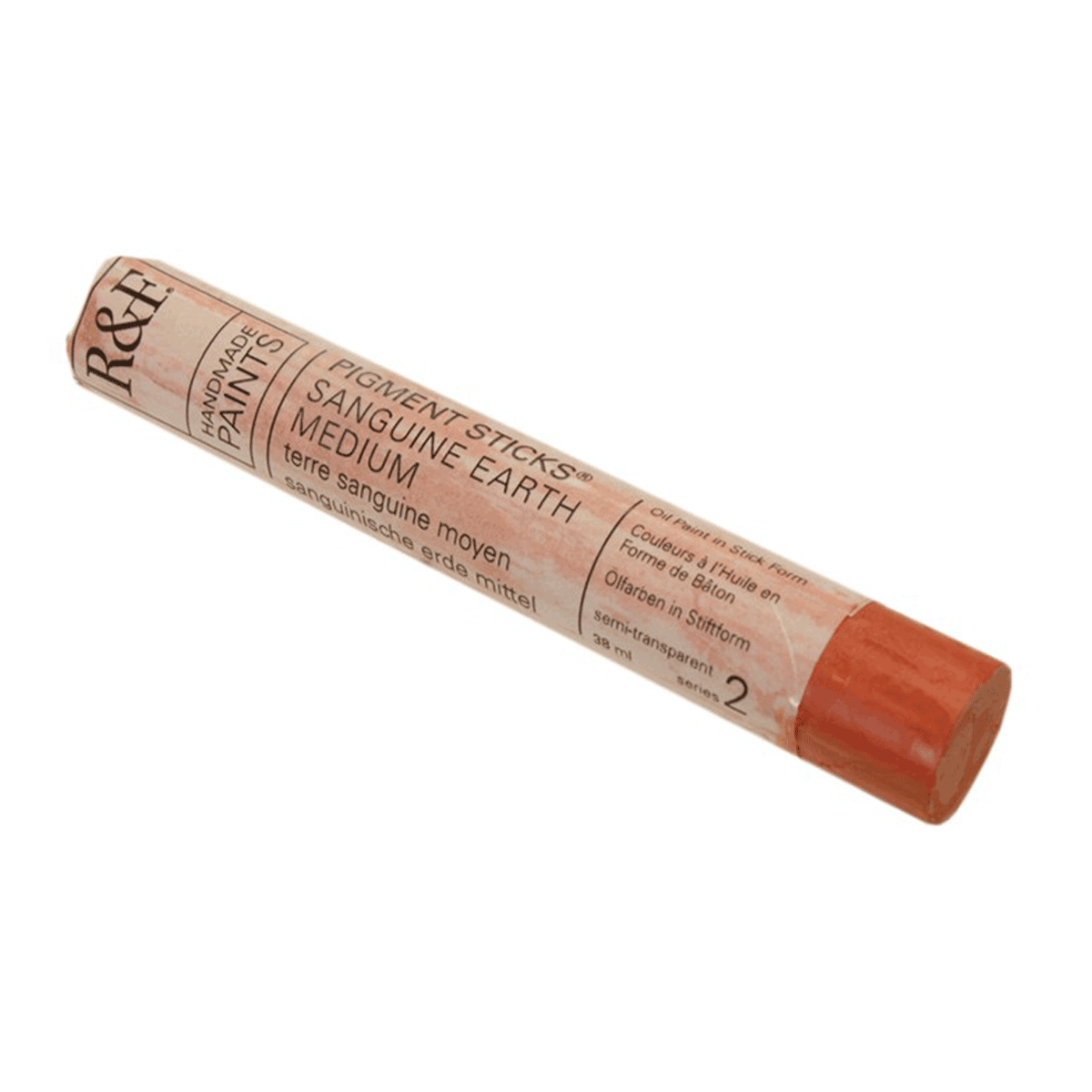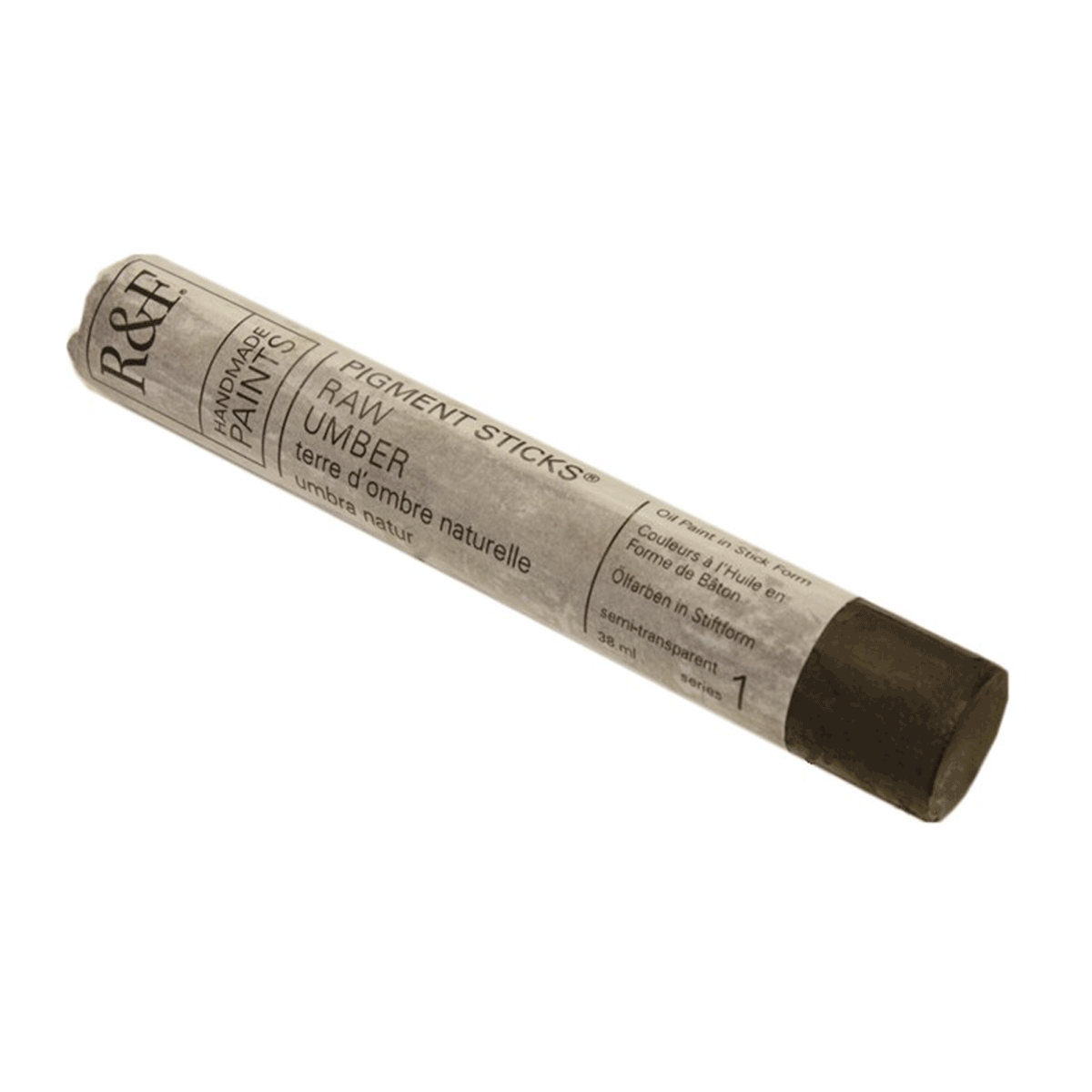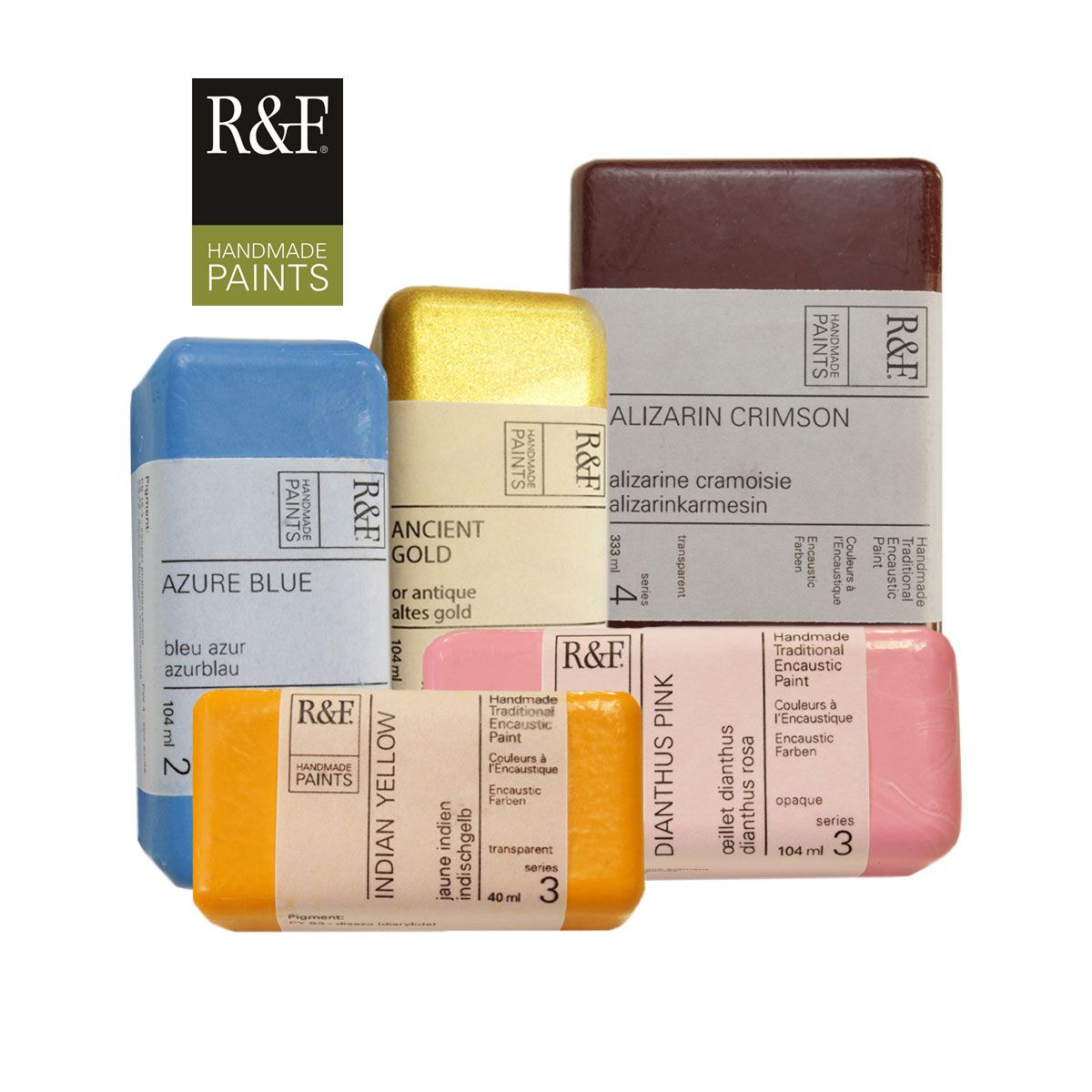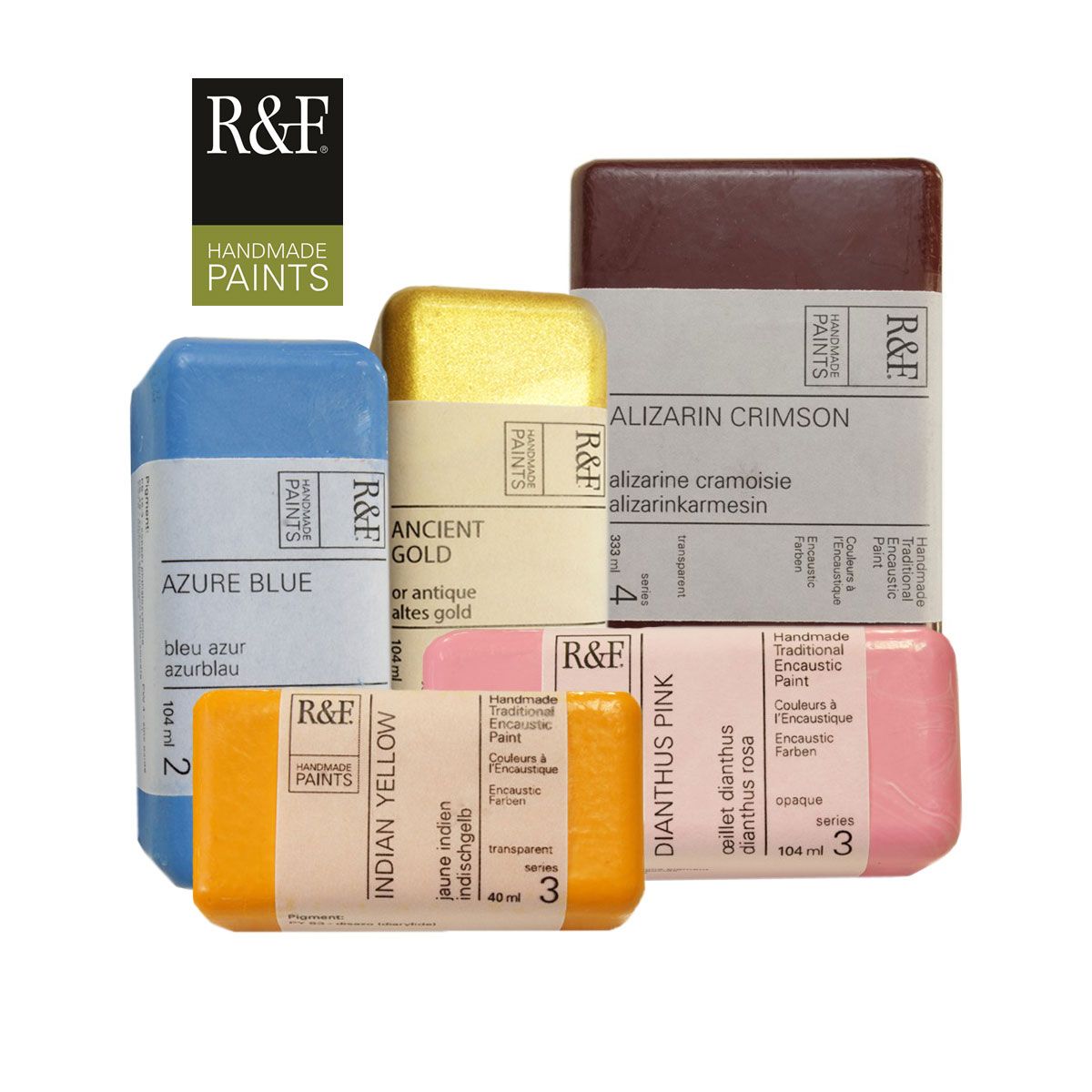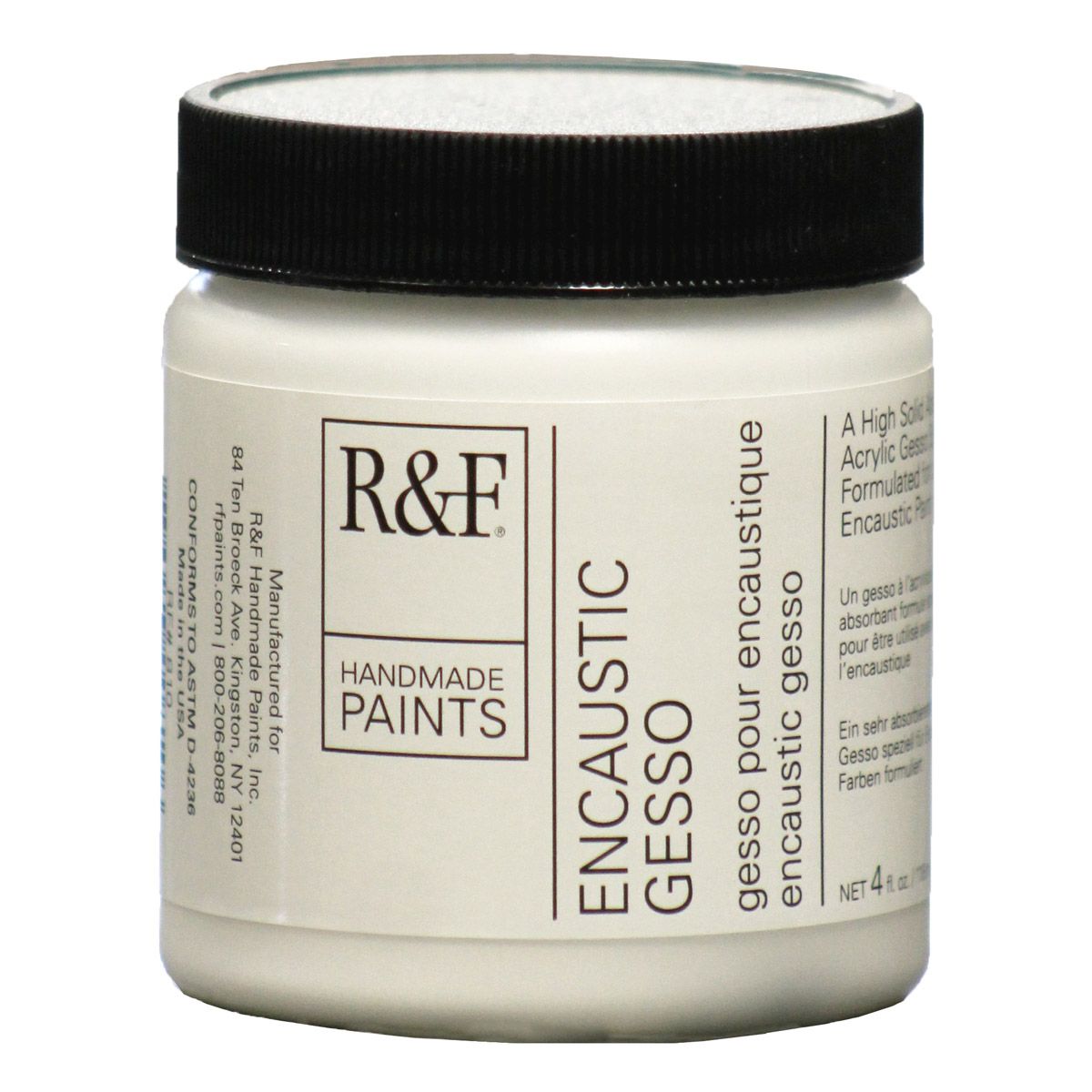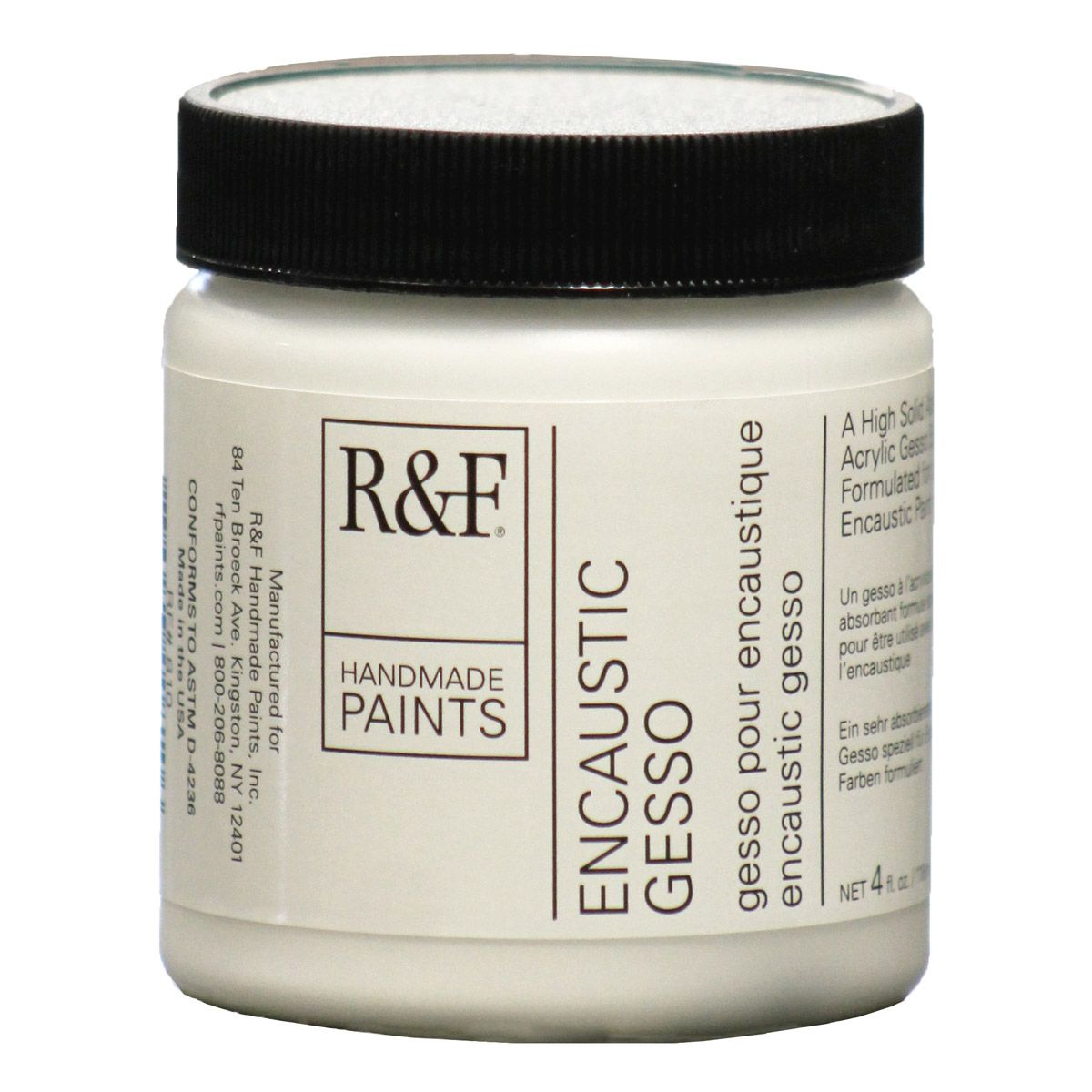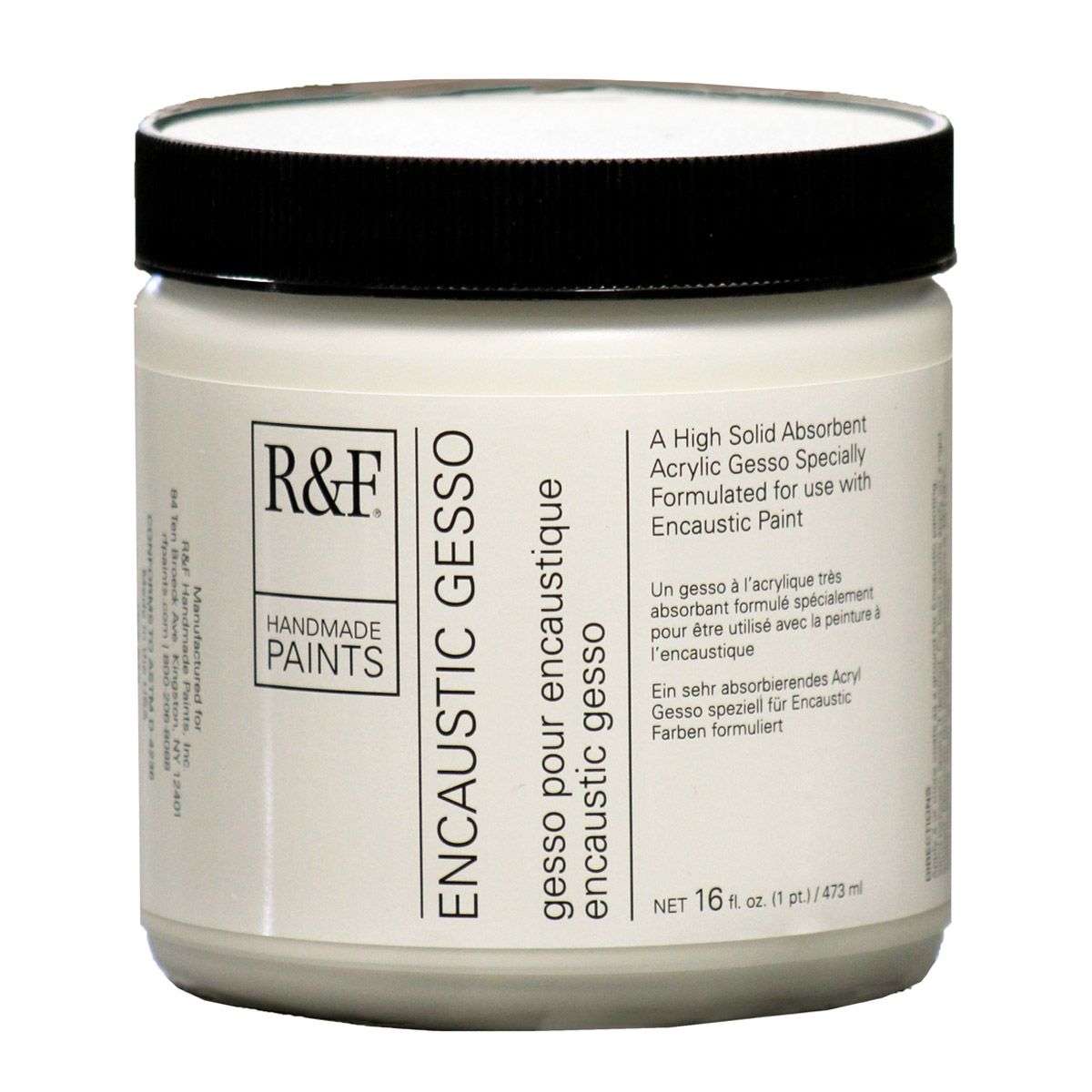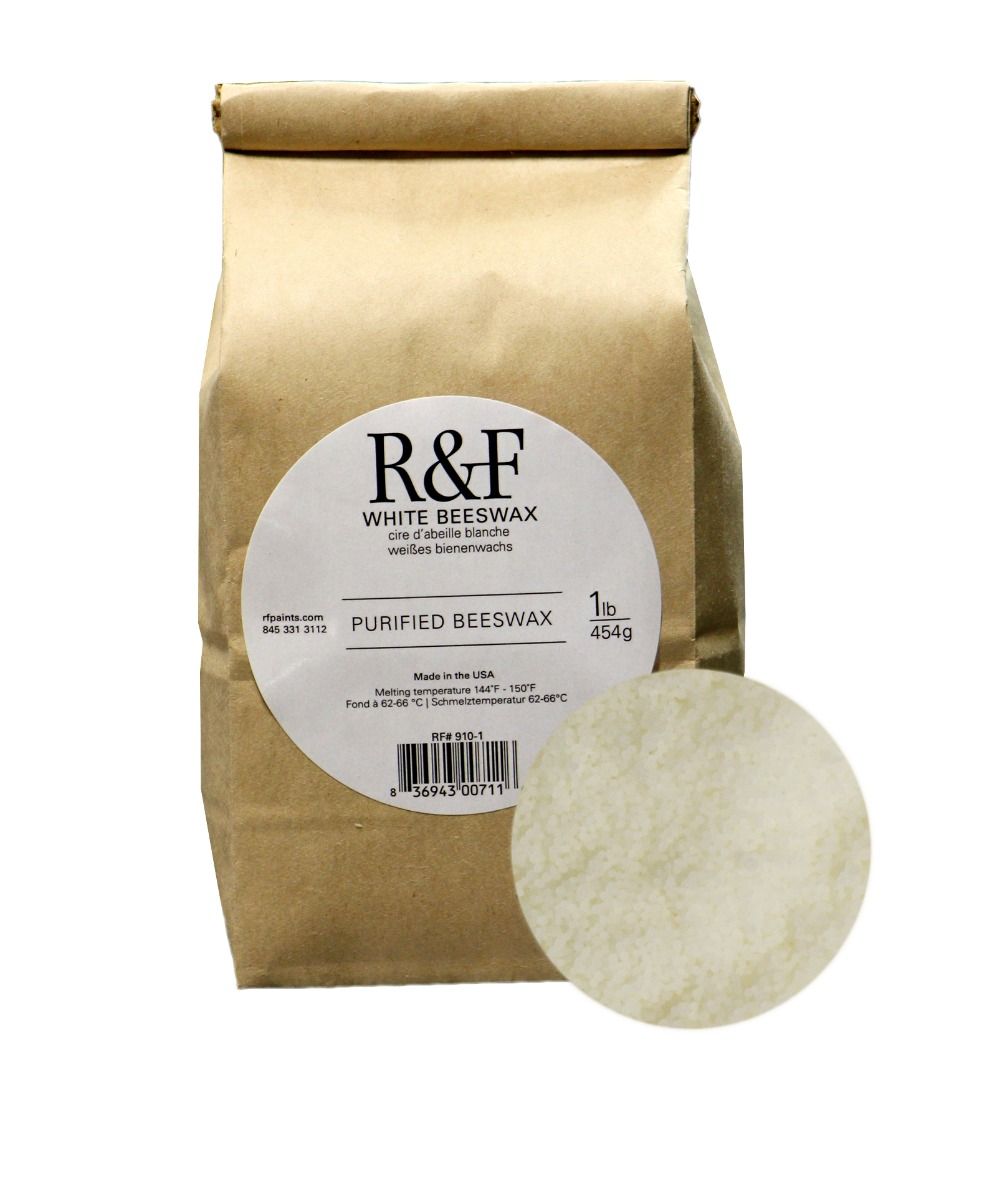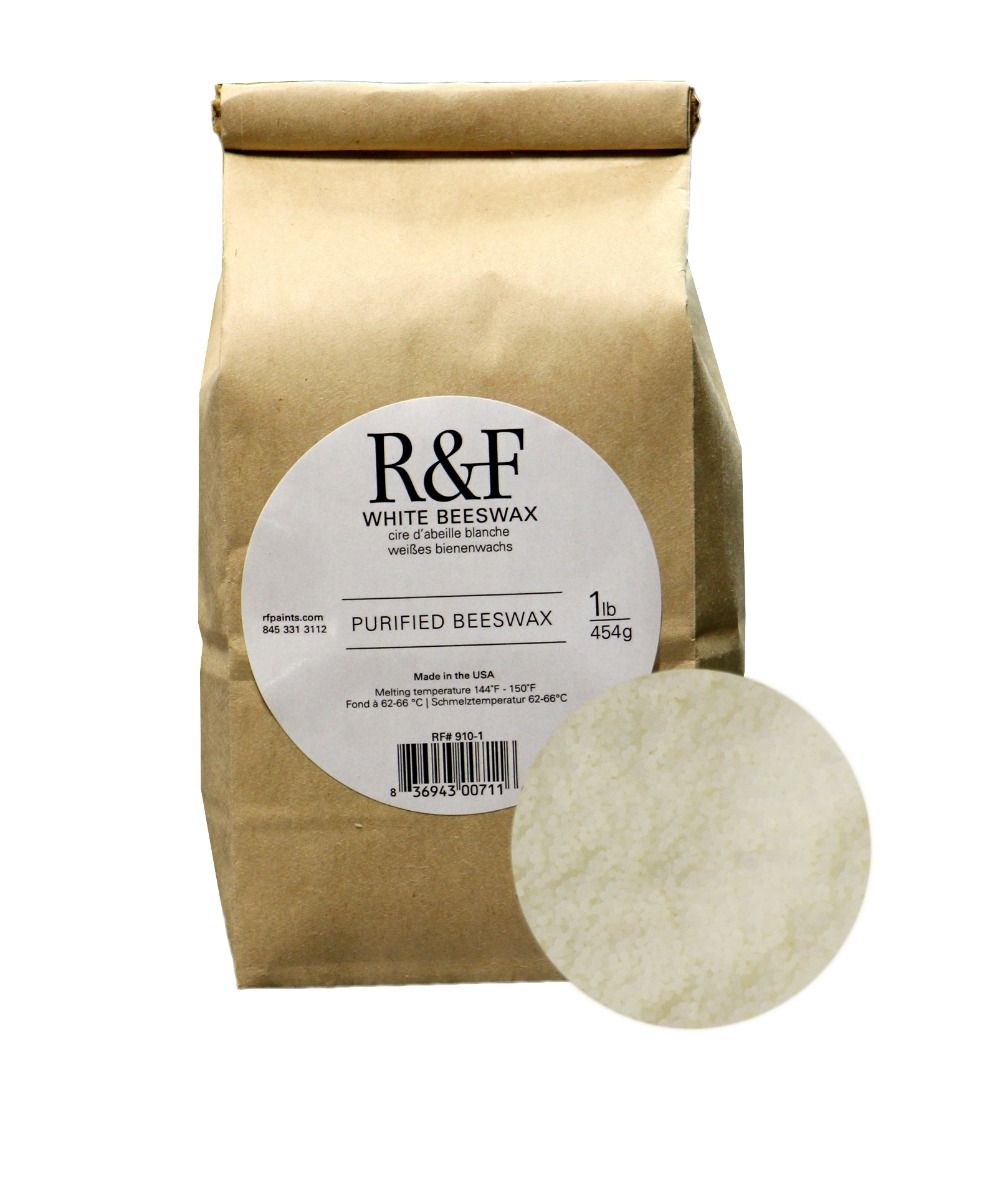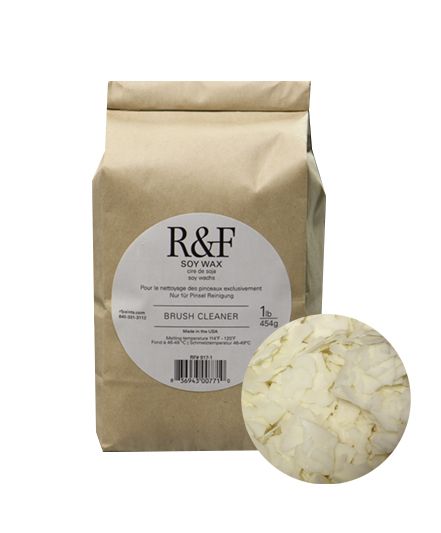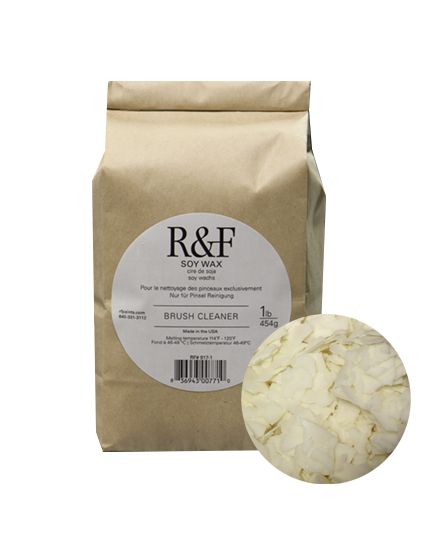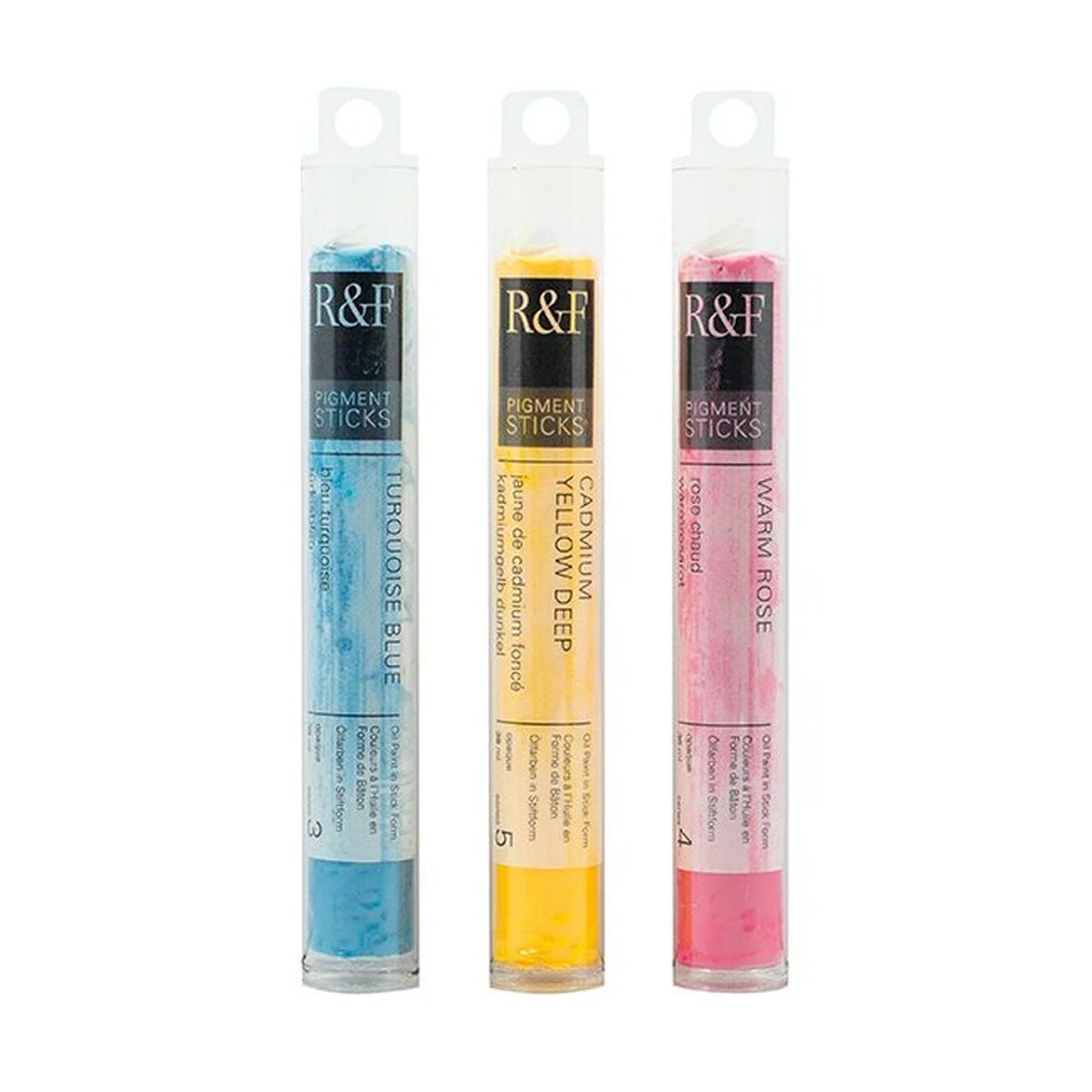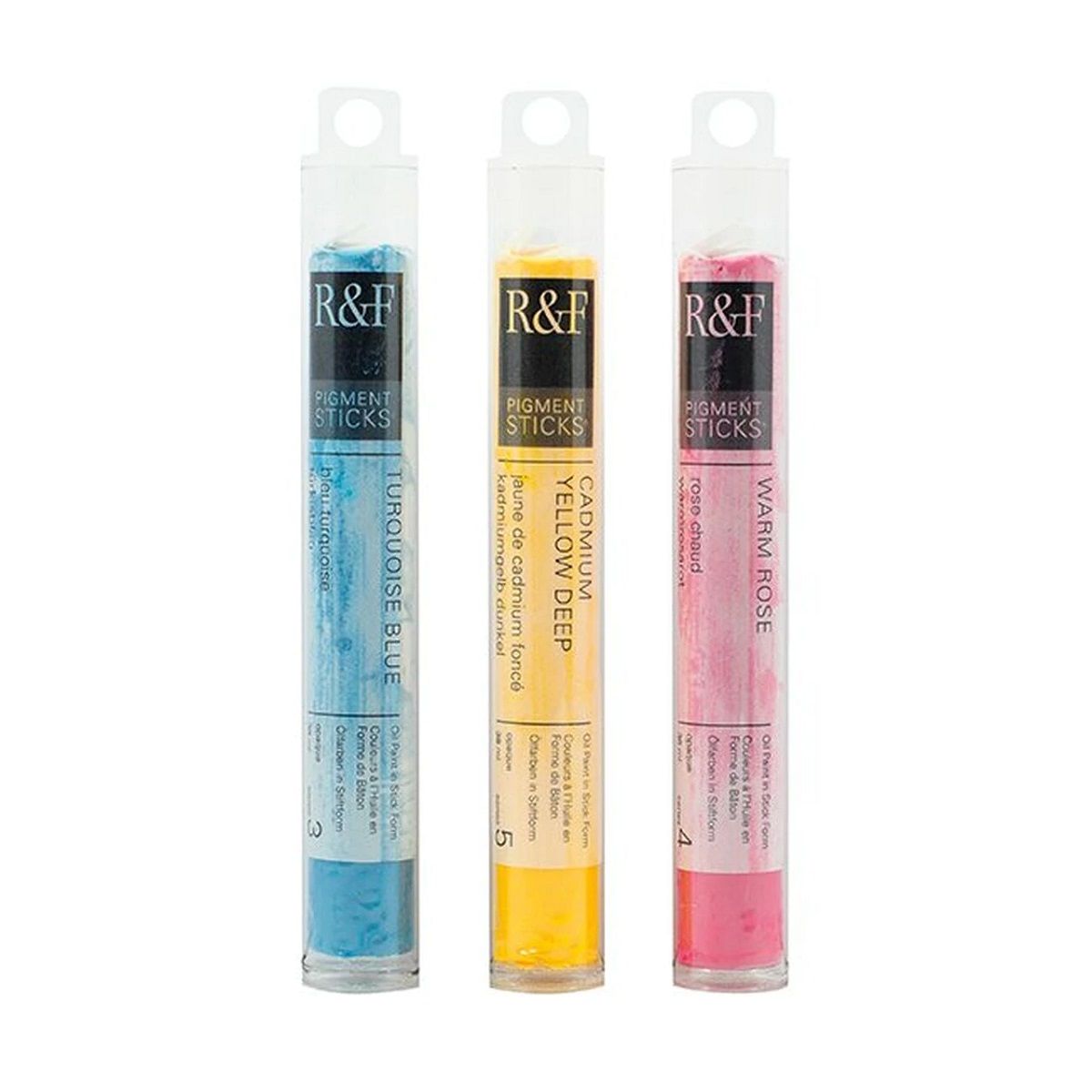R&F Oil Pigment Stick, Sanguine Earth Medium 38ml
R&F Pigment Stick - Sanguine Earth Medium, 40 ml
The warm, orange hue of wet red clay. The sanguine series was developed to duplicate the reddish chalks of Renaissance masters. These are less dense than Mars colours to allow for sensuous fleshy undertones.
- Pigment Composition: PW6-Titanium White; PV19-Quinacridone Violet; PR101-Red Iron Oxide; PW4-Zinc White
- Paint Lines: Pigment Stick
- Opacity: Semi-Transparent
- Pigment Stick Drying Rate: Fast
- Classification: Mixed
- Chemical Composition: Quinacridone pigment, transparent iron oxide, titanium-zinc white
- Safety Information: Conforms to ASTM D-4236
R&F Pigment Stick - Sanguine Earth Medium, 40 ml
The warm, orange hue of wet red clay. The sanguine series was developed to duplicate the reddish chalks of Renaissance masters. These are less dense than Mars colours to allow for sensuous fleshy undertones.
- Pigment Composition: PW6-Titanium White; PV19-Quinacridone Violet; PR101-Red Iron Oxide; PW4-Zinc White
- Paint Lines: Pigment Stick
- Opacity: Semi-Transparent
- Pigment Stick Drying Rate: Fast
- Classification: Mixed
- Chemical Composition: Quinacridone pigment, transparent iron oxide, titanium-zinc white
- Safety Information: Conforms to ASTM D-4236
Pigment Name: PW6-Titanium White
Classification: Synthetic Inorganic
Chemical Composition: Titanium dioxide
Properties
Titanium White is the most brilliant of the white pigments. It is considered an all-purpose oil colour useful in all techniques and the best all-around white. Its masstone is neither warm nor cool, placing it somewhere between Lead White and Zinc White. It is less prone to cracking and yellowing than Lead White, but it still yellows easily. Titanium White dries slowly in oil form, more slowly than Lead White but more quickly than Zinc White. It is opaque in oil and acrylic forms and semi-opaque in watercolour form. This pigment has good chemical stability, and its tinting strength is superior to both Lead White and Zinc White.
Permanence
Titanium White has excellent permanence and lightfastness.
Toxicity
Titanium dioxide is highly stable and is regarded as completely non-toxic. Animal studies do not indicate that it is absorbed biologically, even after long periods of exposure. The primary safety concern is with the inhalation of fine pigment dust particles.
History
Titanium is the ninth most abundant element in the Earth's crust. However, mineral deposits that are economical to mine are less common. Titanium dioxide was first discovered in 1821, although it could not be mass-produced until 1919. Widespread use of the pigment began in the 1940s. Since that time, it has become the most commonly used white pigment. The name comes from the Latin word Titan, the name for the elder brother of Kronos and the ancestor of the Titans, and the Greek word tito, meaning day or sun.
Pigment Name: PV19-Quinacridone Violet
Classification: Synthetic Organic, Quinacridone
Chemical Composition: Transparent iron oxide
Properties
Quinacridone Red is a high-performance, transparent pigment with an average drying time and uneven dispersal. It is another name for Quinacridone Violet (PV19) and Quinacridone Red (PR192). Quinacridone pigments have relatively low tinting strength in general. For this reason, quinacridone colours are often expensive because more pigment is required in the formulation.
Permanence
Quinacridone Violet has excellent lightfastness and is considered the most lightfast organic pigment in this shade range.
Toxicity
Quinacridone Violet has no known acute hazards. Overexposure to quinacridone pigments may cause skin irritation. Quinacridone pigments contain a compound found to be a skin, eye, and respiratory irritant.
History
Although quinacridone compounds became known in the late 19th century, manufacturing methods to make them practical for use as commercial pigments did not begin until the 1950s. Quinacridone pigments were first developed as coatings for the automotive industry but were quickly adopted by artists.
Pigment Name: PR101-Red Iron Oxide
Classification: Synthetic Inorganic, Earth
Chemical Composition: Iron oxides (synthetic), iron oxide, silica, alumina, lime, and magnesia or hydrated iron oxide
Properties
Red iron oxide varies in hue and transparency, depending on hydration and slight impurities. Indian Red is a slightly duller, deep brick hue with a bluish undertone. It is very dense and opaque, with excellent tinting strength and covering power. It is dependable when mixing with all other permanent pigments and yields good flesh tints when mixed with Zinc White. It is the synthetic version of PR102, a pigment made from earth reds or natural red iron oxides, and the names applied to PR101 and PR102 often overlap. Synthetic red iron oxides have mostly replaced natural red iron oxides and are brighter, more robust, refined, and permanent. Indian Red is the highest grade bluish shade. Light Red, English Red, and Venetian Red are yellowish shades. Mars Violet is a dull and subdued bluish or purplish oxide.
Permanence
Red iron oxide is very lightfast with excellent permanence.
Toxicity
Red iron oxide has no significant hazards.
History
Natural red iron oxide comes from the mineral ore hematite, called bloodstone by the ancient Greeks from the word hema, meaning blood. It is one of the oldest pigments, has been used by every major civilization, and was an essential mineral for medieval alchemists. It was not widely used in artists' materials until the 17th century and was not produced in large quantities until the 18th century.
Pigment Name: PW4-Zinc White
Classification: Synthetic Inorganic
Chemical Composition: Zinc (II)-oxide
Properties
Zinc White is the coolest white and has a cold, clean masstone and a slightly bluish tint. It has less hiding power and is more transparent than other whites. It dries slowly and is suitable for painting wet into wet and glazing and scumbling. Zinc White is neither as opaque nor heavy as Lead White; its covering power is not as good and takes much longer to dry. However, it does not blacken when exposed to sulphur in the air as Lead White does. It is precious for making tints with other colours. Unmixed Zinc White dries to a brittle and dry paint film that may crack over the years, so it is unsuitable for frescoing. It is more transparent in acrylic than Titanium White and is the most commonly used white with gouache. Chinese White is a version of Zinc White appropriate for opaque watercolour techniques.
Permanence
Zinc White has excellent permanence and lightfastness.
Toxicity
Zinc White is moderately toxic if ingested and slightly toxic if inhaled.
History
Though historians are divided on who first isolated the element zinc, they agree it was first suggested as a white pigment in 1782. Zinc White was accepted as a watercolour in 1834 and was called Chinese White due to the popularity of oriental porcelain in Europe at the time. Ten years later, a suitable oil form was produced. By the early 20th century, it had improved to the point where it was an acceptable alternative to Flake White.
| Size | 38 ml |
|---|---|
| Brand | R&F Encaustic Handmade Paints |
| Country of Manufacture | United States |
| Type of Store Credit value | Select |
| Country of Origin | 836943005969 |










